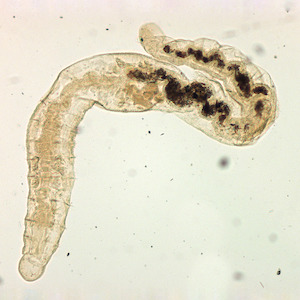Oligochaete distribution in alpine freshwaters: not a mere question of altitude

Accepted: 22 September 2023
Supplementary: 43
HTML: 5
All claims expressed in this article are solely those of the authors and do not necessarily represent those of their affiliated organizations, or those of the publisher, the editors and the reviewers. Any product that may be evaluated in this article or claim that may be made by its manufacturer is not guaranteed or endorsed by the publisher.
Authors
Alpine freshwater biodiversity is at risk of extinction due to climate change and some species could remain undescribed before they go extinct. These species are not yet included in red lists of protection by law, such as annelids in alpine habitats. Within this context, we studied the annelid fauna in 20 sites located between 1223 and 2703 m asl, belonging to different habitat types (kryal, glacio-rhithral, non-glacial streams, springs, littoral lake zone), in three glaciated catchments of the Italian Alps (Noce Bianco, Careser and Conca-Carè Alto; Trentino Province). The aim of this study was to describe the annelid communities of the different habitat types collected with different sampling methods (kick sampling and drift) and investigate the relationships between species richness and abundance with altitude. Between the years 2000 and 2005, we collected 4,765 individuals in 418 samples. One genus of Polychaeta (Aeolosoma) and 36 species of Oligochaeta were identified, distributed in four families: Enchytraeidae (28), Lumbriculidae (4), Naididae (3 and Tubificinae juveniles) and Haplotaxidae (1). Five species were new to Italy: Cernosvitoviella carpatica, Cernosvitoviella cf. crassoductus, Henlea brucei, Henlea glandulifera and Mesenchytraeus sanguineus. As expected, Enchytraeidae prevailed in all sites with the genera Cernosvitoviella and Cognettia the most abundant and frequent. The regression and cluster analyses and the generalized linear mixed models we performed, highlighted that the differences in species richness and abundance among sites are explainable partly by altitude but mainly by habitat type. A clear longitudinal species turnover was evident only in the Noce Bianco and Careser glacier-fed streams, where taxonomic diversity (tested by Seriation analysis) and abundance increased with increasing distance from the glacier front and decreasing altitude. Also expected, the harsh kryal habitat was the poorest in species and individuals, with a dominance of semi-aquatic and terrestrial enchytraeid taxa. Drift was found to be more effective than kick sampling in collecting oligochaetes, especially in glacier-fed streams where the use of the pond net is generally hindered by their high and highly variable discharge. In conclusion, this study provides new data on oligochaete fauna in alpine freshwaters, useful to implement the prevision models for Alpine biodiversity up to date not including annelid fauna.
Edited by
Francesca Bona, Department of Life Sciences and Systems Biology, University of Turin, ItalyHow to Cite

This work is licensed under a Creative Commons Attribution-NonCommercial 4.0 International License.
Similar Articles
- Pietro VOLTA, Niels JEPSEN, The recent invasion of Rutilus rutilus (L.) (Pisces: Cyprinidae) in a large South- Alpine lake: Lago Maggiore , Journal of Limnology: Vol. 67 No. 2 (2008)
- Rachel C. HELLIWELL, Martin KERNAN, Modelling hydrochemical and ecological trends in acid sensitive surface waters in the Scottish Highlands , Journal of Limnology: Vol. 63 No. 1 (2004)
- Silvia Giuntini, Clara Tattoni, Alessandra Gagliardi, Alessio Martinoli, Nicola Patocchi, Roberto Lardelli, Adriano Martinoli, Damiano G. Preatoni, Dataset: bird traffic rate at Bolle di Magadino Natural Reserve, Lake Maggiore (Switzerland) , Journal of Limnology: Vol. 81 No. s2 (2022): Effects of water level management on lake littorals and downstream river areas
You may also start an advanced similarity search for this article.

 https://doi.org/10.4081/jlimnol.2023.2148
https://doi.org/10.4081/jlimnol.2023.2148




